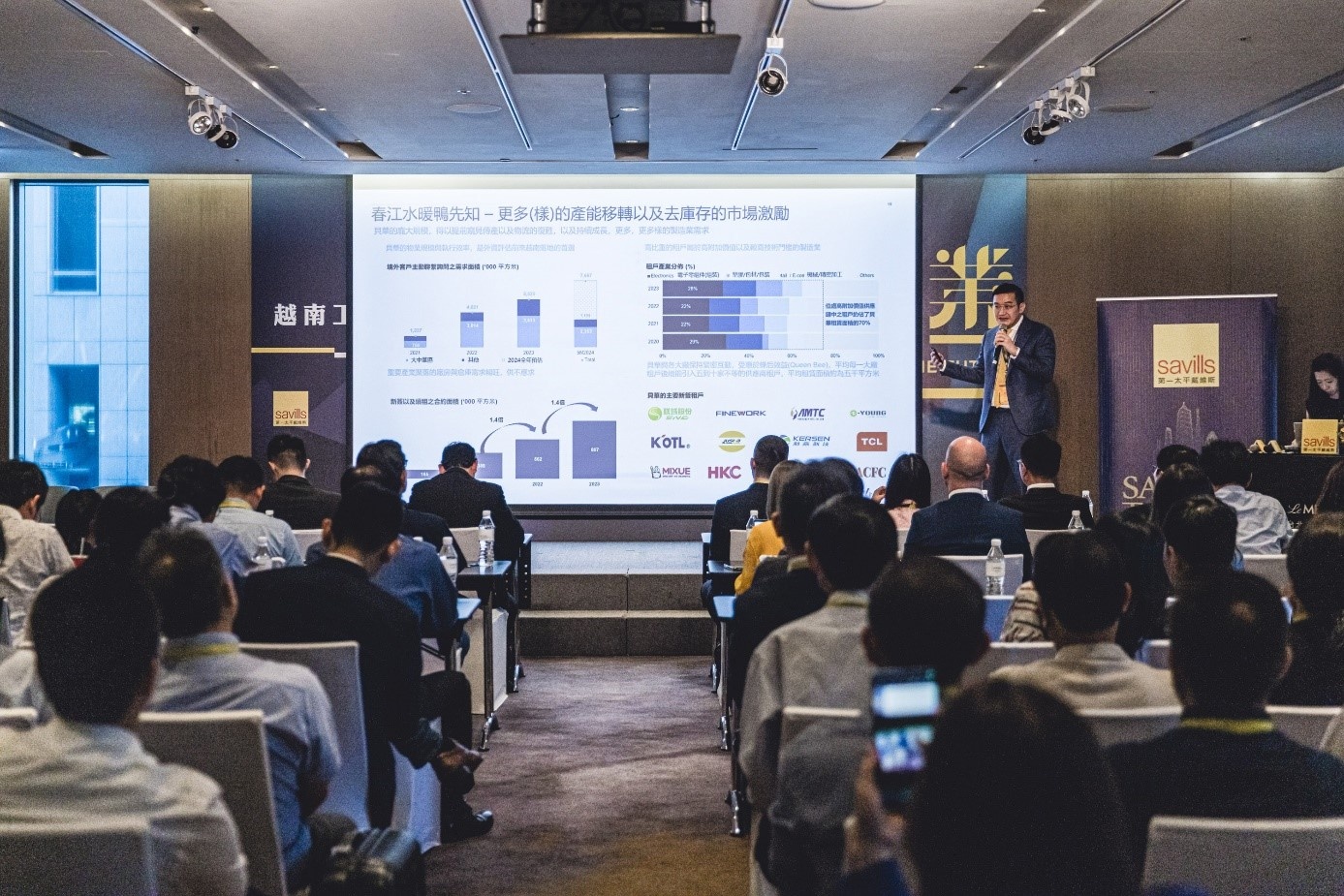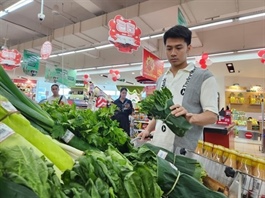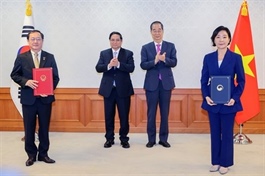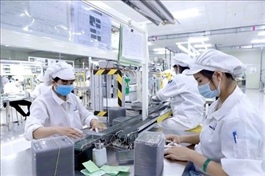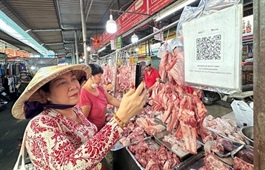Strong economic performance in H1 calls for continued efforts toward year-end goals
Strong economic performance in H1 calls for continued efforts toward year-end goals
The strong growth experienced in the first half of the year provides a solid foundation for building momentum towards achieving the annual growth target. If there are no major fluctuations, the General Statistics Office (GSO) predicts that Việt Nam is likely to reach the 2024 annual growth target, estimated between 6 and 6.5 per cent.
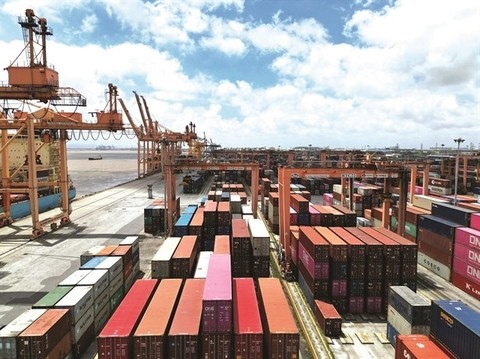
BOOMING TRADE: Goods loaded at Hải Phòng Port in Hải Phòng City. Việt Nam's economy is experiencing a surge, fuelled by strong export and industrial production. — VNA/VNS Photo Tuấn Anh |
According to the GSO, the country's GDP growth in the first six months of the year was 6.42 per cent year-on-year.
Nguyễn Thị Hương, GSO director general, said despite numerous challenges and uncertainties the global economy had improved as demand rebounded, while inflation was largely under control thanks to efforts to improve the economy's supply side.
Foreign investment disbursement in the first half of this year reached an estimated US$10.84 billion, surging 8.2 per cent year-on-year and marking a record high over the past five years. The foreign investment inflows into Việt Nam during the reviewed period also saw a positive increase of 13.1 per cent year-on-year, to nearly $15.19 billion.
Foreign investors registered nearly $9.54 billion in 1,538 new projects, up 47 per cent in capital and 19 per cent in project numbers, compared to the same time last year.
“Việt Nam's socio-economic situation in the second quarter achieved positive results amid global economic uncertainties. The Government’s management policies, led by the Prime Minister and various ministries and localities, have gradually proven effective, ensuring the smooth operation of supply chains and distribution of goods and services, reducing lending interest rates, stabilising the foreign exchange market, promoting public investment disbursement and implementing credit packages to support various sectors,” Hương said.
Also according to a series of reports from international organisations, Việt Nam's economy is experiencing a surge, fuelled by strong export and industrial production.
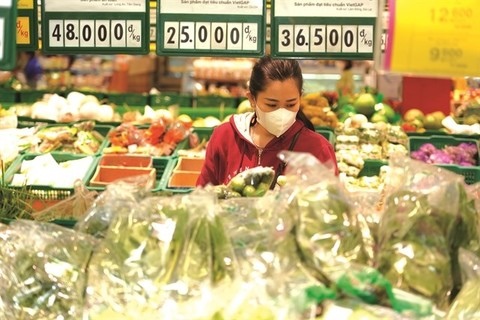
PRICES RISING: People shop at Co-opmart supermarket in the southern province of Tây Ninh. Several key macro economic indicators show considerable pressures on the economy, notably inflation. — VNA/VNS Photo Minh Phú |
The International Monetary Fund (IMF) expressed optimism in its 2024 Article IV consultation with Việt Nam. Paulo Medas, head of the IMF team to Việt Nam, predicted a nearly 6 per cent growth for the Vietnamese economy in 2024, supported by robust external demand, stable FDI and recent policy adjustments. Inflation is expected to stay within the State Bank of Việt Nam (SBV)'s target range of 4-4.5 per cent this year.
The fund welcomed Việt Nam's efforts to streamline the real estate sector by amending the Land Law and other related regulations, he said, stressing the need for the country to continue restructuring struggling property developers and fostering a healthy corporate bond market.
Standard Chartered Bank released an update projecting Việt Nam's GDP growth at 5.3 per cent in the second quarter. Its experts forecast significant growth in retail sales (8.2 per cent year-on-year) and exports (14.2 per cent) for June. The electronics export sector is expected to maintain its upward trajectory throughout the year.
Import growth and industrial production were anticipated to reach 26 and 5.2 per cent, respectively, in June. Inflation might rise slightly to 4.5 from 4.4 per cent in May, marking the third consecutive month it stayed above 4 per cent. Rising costs in education, housing, health care and food were driving this inflation and the trend is likely to continue in the coming months.
A World Bank (WB) report dated June 19 indicated a 2.6 per cent month-on-month increase in Việt Nam's industrial production index (IIP) for May. This growth was primarily driven by the manufacturing and processing sectors, particularly machinery, equipment, computers and electronics. The report highlighted a notable rise in the import of intermediate goods, suggesting strong demand from trade partners and potentially even higher export levels in the near future.
Meanwhile, the Asian Development Bank (ADB) reported a 7.7 per cent growth in Việt Nam's local currency bond market in the second quarter compared to the previous one, which was attributed to increased government bond issuances and the SBV's resumption of issuing treasury bills in March. Treasury and other government bonds rose by 3.3 per cent in Q2 to support government funding needs. In contrast, corporate bonds fell by 0.9 per cent due to a large volume of maturing bonds and low issuance volume.
Việt Nam's sustainable bond market, comprised primarily of green bonds issued by individual enterprises, reached $800 million by the end of March, most on short maturities.
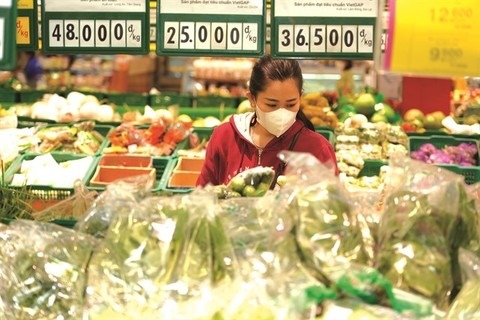
PIECE WORK: A production line at Cap Global Ltd Co in the northern province of Hòa Bình. — VNA/VNS Photo Trọng Đạt |
Despite the solid growth rate, Việt Nam's GDP in the first half of 2024 increased by 6.42 per cent, slightly lower than the 6.58 per cent rate recorded during the same period in 2022 within the 2020-24 timeframe.
In comparison to the two growth scenarios outlined in Resolution 01/NQ-CP, based on GDP growth results from the first quarter of 2024, second-quarter GDP growth surpassed expectations, reaching 5.85 per cent in the lower scenario and 6.32 per cent in the higher scenario. This positive outcome is a favourable position for Việt Nam to aim for the upper limit of the 2024 growth target of 6.5 per cent.
Despite this positive economic recovery, with second-quarter GDP growth estimated at 6.93 per cent and first-half growth at 6.42 per cent, surpassing forecasts, significant challenges lie ahead.
Several key macro-economic indicators show considerable pressures on the economy, notably inflation. The average Consumer Price Index (CPI) rose by 4.08 per cent compared to the same period last year, exceeding the lower end of the annual target range of 4-4.5 per cent. CPI is also showing a persistent upward trend on a monthly basis.
Economic experts caution that inflation may continue to rise due to supply fluctuations, global price volatility, increased demand during the peak summer season for electricity and services such as transportation and tourism, the wage increases which took effect from July 1 and anticipated adjustments in prices of State-controlled items such as electricity, medical services and education.
According to Nguyễn Thị Mai Hạnh, director of the GSO’s Department of National Accounts System, domestic consumption has shown signs of improvement but has not yet met expectations. Evidence of this can be seen in the fact that total retail sales of goods and revenue from consumer services (excluding price factors) increased by only 5.7 per cent over the past six months, significantly below anticipated levels.
According to Nguyễn Quốc Việt, PhD, deputy director of the Institute for Economic and Policy Research at the Hà Nội National University, businesses and individuals are still cautious in their spending and investment due to uncertain economic prospects. This cautious approach is reflected in the low credit growth index, despite an increase in deposits held by banks. Additionally, the rise of e-commerce and the availability of inexpensive goods from abroad are having a profound impact on domestic products.
In terms of industrial production, the added value of the entire industry in the first half of 2024 rose by 7.54 per cent compared to the same period last year. While the processing and manufacturing sector continued to drive overall economic growth, 56 localities saw an increase in the Industrial Production Index, although seven others experienced a decline.
Statistics indicate that certain service sectors, such as wholesale and retail, automobile and motorcycle repair, and finance and banking, all recorded lower growth rates than in the first half of 2023.
The disbursement of public investment funds has shown a tendency to stagnate, failing to exhibit strong growth even though total public investment resources this year are lower than last year. Notably, some ministries and departments have yet to disburse any funds, with allocated capital still sitting unused.
As the challenges and obstacles ahead are significant, Hạnh proposed industries and sectors should closely monitor production and business conditions to proactively address emerging risks. This includes focusing on policies to eliminate obstacles, freeing up resources for businesses and production establishments, particularly in processing, manufacturing and market services. Enhancing linkages between production and distribution and accelerating the efficient disbursement of public investment capital are also crucial to achieving targets and benefiting other economic sectors. Furthermore, efforts to stimulate domestic consumption and innovate trade promotion activities to capitalise on market recovery trends and export opportunities must continue.
Enterprises continue to grapple with numerous challenges, including persistent issues in the business environment, capital constraints and high input costs amid a challenging output market.
The country needs to 'renew' old growth drivers and effectively harness new ones, such as digital economic development, increased labour and total factor productivity and the advancement of the private sector. Enhancing and refining institutional quality is also pivotal.
To boost demand, the National Assembly has extended a 2 per cent reduction in VAT on certain goods and services until the end of the year. Some experts advocate for extending this policy until the end of 2025 and even propose deeper VAT cuts to encourage increased consumer spending.
A report from the Ministry of Planning and Investment underscores the necessity of implementing decisive measures to resolve production and business difficulties, unfreeze credit flows, expedite public investment disbursement, and drive economic growth. Additionally, maintaining focus on controlling inflation remains critical in the current economic climate.
Hạnh said that in the second half of the year, Việt Nam's economy must implement fiscal and monetary policies, as well as investment and consumption stimuli, with flexibility. This approach aims to ensure economic, political and social stability while balancing macroeconomic indicators and effectively controlling inflation. The country should also focus on revitalising growth drivers to foster breakthroughs in strategic infrastructure development.
"Adhering to the guiding principle of 'No retreat, Only action' we emphasise courage, proactiveness and unwavering determination. We are confident that with concerted efforts from the entire political system, ministries, agencies, local governments, organisations, businesses and citizens, the ambitious growth target of 6.5 per cent is achievable," she added.






